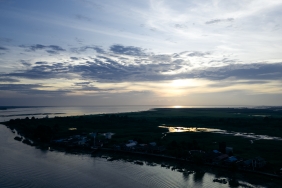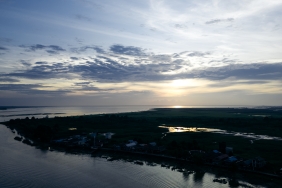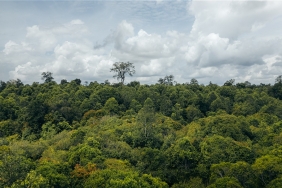VILLAGE JAMBORE: SHARING LESSONS FOR SUSTAINABLE FOREST AND VILLAGE MANAGEMENT
Taking place at the Indoor Volleyball Building, Putussibau, Kapuas Hulu, West Kalimantan, June 22-23, 2025, WWF-Indonesia, with support from the Kapuas Hulu Regional Government, initiated a Village Jamboree. The Village Jamboree is a form of appreciation for the collaborative journey and to strengthen networking and knowledge exchange between villages, as well as a moment of reflection, inspiration, and celebration of shared achievements.
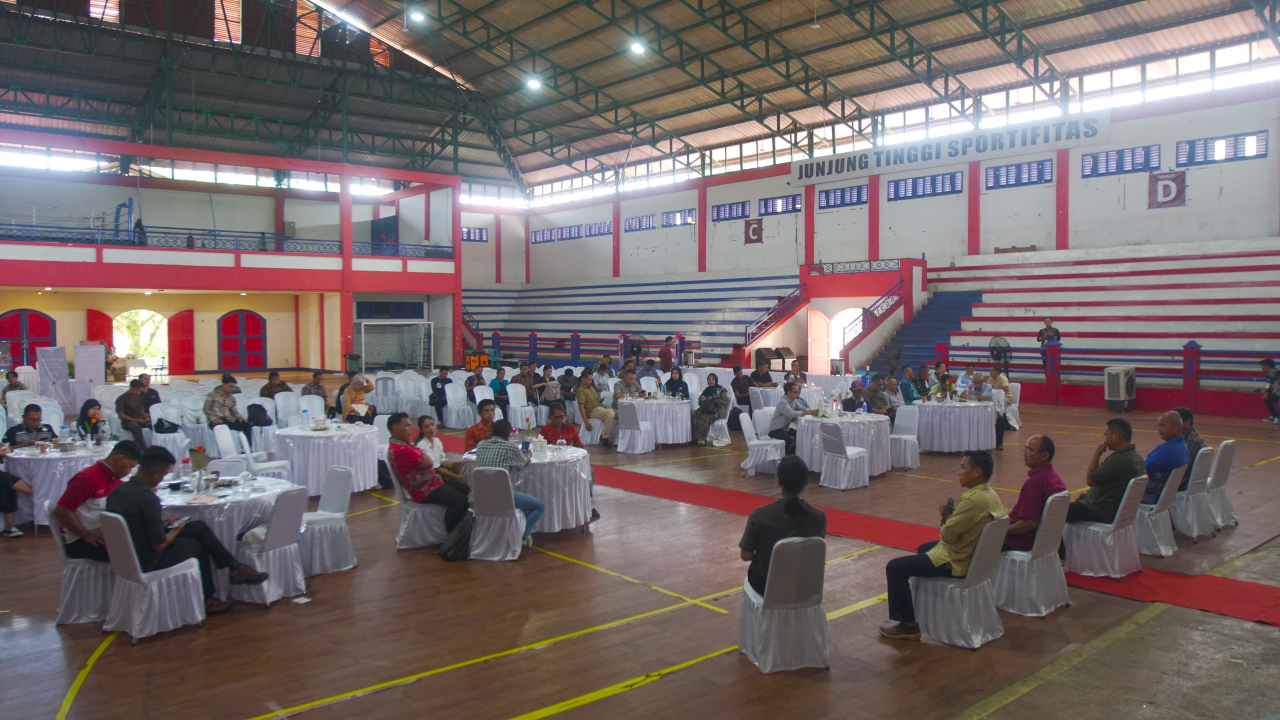
This activity was attended by representatives of communities involved in sustainable area management efforts, namely Bahenap Village, Kensuray, Rantau Kalis, Nanga Danau, Menua Sadap, and Labian as WWF-assisted villages. Also present were 16 villages in 3 sub-districts where WWF-assisted villages are located. In an atmosphere full of enthusiasm and togetherness, they discussed and shared experiences about good practices in forest utilization management. spread across three sub-districts in Kapuas Hulu, namely Kalis, Embaloh Hulu, and Batang Lupar sub-districts. Also present were representatives from the local government, including the Secretary of the Kapuas Hulu District Community and Village Empowerment Office, BAPPEDA, P3MD experts, and the Betung Kerihun and Danau Sentarum National Park Center (BBTNBKDS). A number of representatives from civil society organizations (CSOs) in Kapuas Hulu also participated, enriching the event with cross-sector perspectives and support.
The Village Jamboree began with an introduction from the Kapuas Hulu Project Leader, Hermas Rintik Maring, who said that the event was designed as a common space for discussion and sharing of lessons learned between villages. The aim is to replicate experiences and good practices that have proven successful in their respective villages, as a concrete step towards sustainable development.
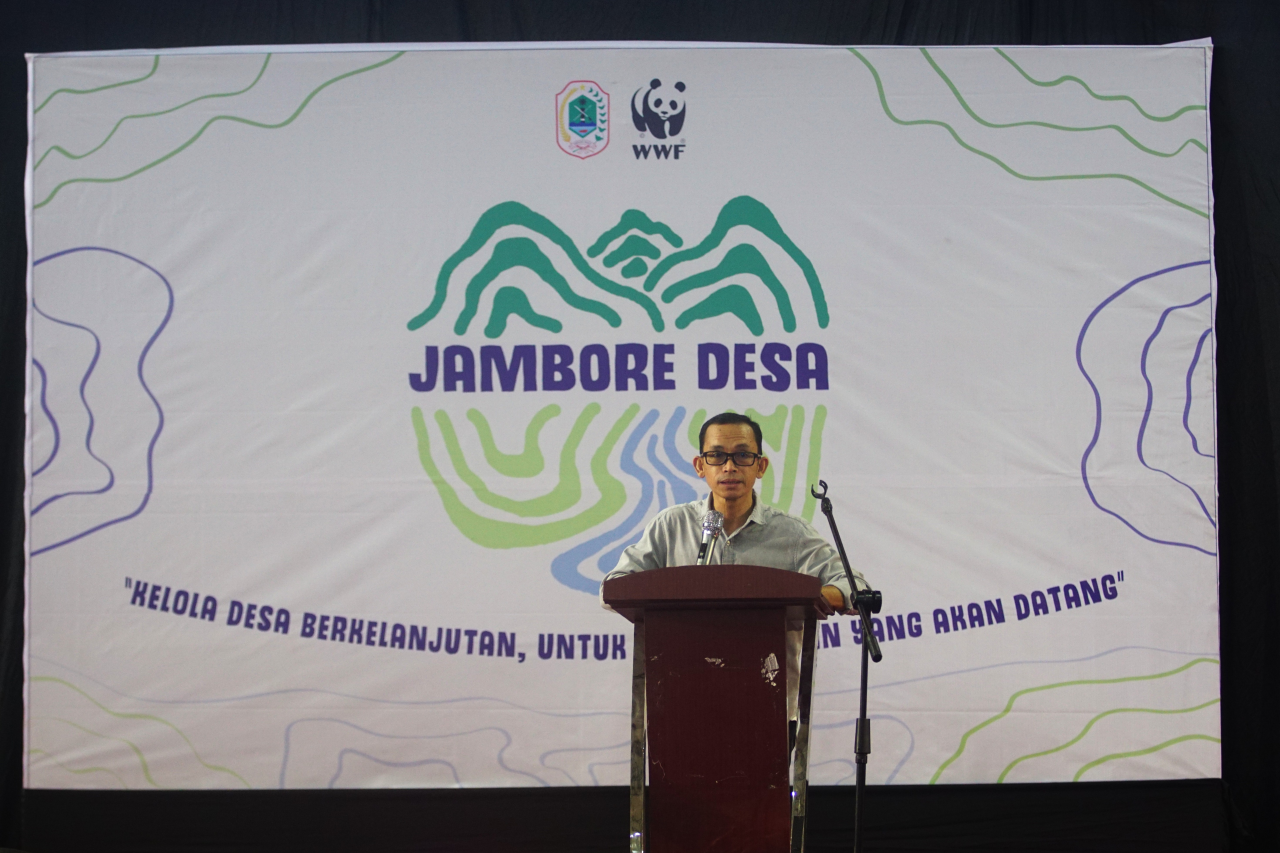
Next, the event was officially opened by PLT Assistant III, Muhammad Nazzarudin, SKM, MPH. In his speech, he expressed his appreciation to WWF for the initiatives and programs that have encouraged the improvement of the community's economy. He also highlighted the challenges of climate change that are now faced by many villages, especially those that depend on the agricultural and plantation sectors. One of the adaptation efforts that was appreciated was the introduction of climate-smart agricultural practices, which were introduced through WWF's assistance. This approach not only helps communities improve food security, but also teaches them how to maintain, care for and utilize the area sustainably.
The Village Jamboree was divided into two inspiring learning sessions. The first session was led by Samuel Moring from the Green Leadership Community, with three main topics. The first topic was on the restoration of customary territories, presented by Moses Bungkong from Sadap Hamlet and Nopi Irwandi Lagi from Kelayam Hamlet. The second topic on the utilization of environmental services was raised through the experiences of Hendrikus, Head of Labian Village, and Robertus Tutong, a representative of the indigenous community from Menua Ngaung Keruh. The third topic discussed village land use, which was presented by Onyang, a representative of the village government as well as the indigenous people of Rantau Kalis Village.
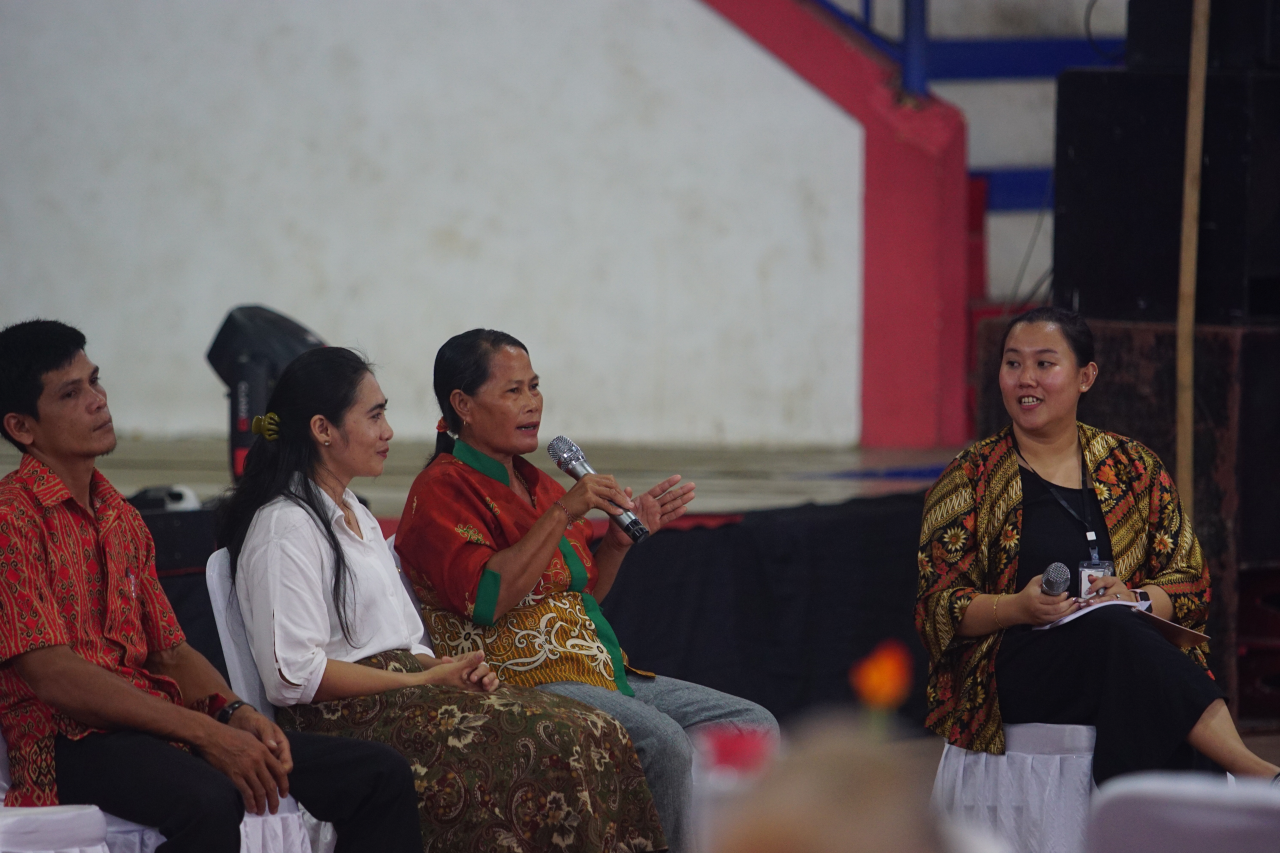
From 2022 to 2025, a number of villages in Kapuas Hulu have started and are continuing efforts to use and manage natural resources sustainably. One important step taken is to strengthen community involvement in area management through proposing sustainable forest legality under the Customary Territory and Forest scheme. To date, four customary territories-Nanga Tubuk, Nanga Danau, Rantau Kalis, and Kelayam-have successfully obtained legal recognition with a total area of approximately 8,671.448 hectares. The legalization process was made possible through technical support from WWF-Indonesia and close collaboration with members of the Civil Society Forum (CSO) in Kapuas Hulu.
.
After obtaining legality, the community also developed a management plan for the customary area that serves as a guideline in realizing sustainable and purposeful management. At the village level, this effort was expanded through a participatory land-use identification and structuring process, so that development plans are better aligned with local conditions and potential. Six villages-Bahenap, Kensuray, Rantau Kalis, Nanga Danau, Nanga Tubuk, and Menua Sadap-have developed detailed land use plans, which are now one of the main references in the development of future village development plans.
Not only stopping at the planning stage, some indigenous communities have also technically carried out concrete efforts in the management and sustainable use of the area. One form is forest restoration activities that include the protection and rehabilitation of critical areas. This activity was carried out in several locations, such as Kelayam Hamlet and Sadap Hamlet in Menua Sadap Village, and Ngaung Keruh Hamlet in Labian Village. The three locations are within the Labian-Leboyan Corridor area, which, based on West Kalimantan Regional Regulation No. 8 of 2024 concerning the West Kalimantan Provincial Spatial Plan for 2024-2043, has been designated as a Provincial Strategic Area due to its important role in supporting the function and carrying capacity of the environment. Within the framework of this restoration effort, the community managed to protect a total area of 6,739.94 hectares. Of this area, approximately 394.87 hectares have been rehabilitated through replanting activities, demonstrating the strong commitment of local communities in maintaining and restoring forest ecosystems in a sustainable manner.
Various efforts continue to be made by village communities in promoting sustainable development. One of them is through the development of climate-smart agriculture, the utilization of non-timber forest products such as forest salak, which is now processed into sweets, and the protection of clean water source areas. Innovation is also seen in the processing of horticultural products into various derivative products, such as ginger and turmeric powder drinks, candied ginger, and chili powder. To support economic sustainability, villages are also strengthening Village-Owned Enterprises (BUMDes) as legal entities (registered with the Ministry of Law and Human Rights), which not only facilitate product marketing but also provide access to capital sources, legality, and capacity building programs. To date, four BUMDes have started operations, and eight sustainable business commodities have been developed in four villages.
As part of the Village Jamboree activities, a local exhibition showcasing climate-smart agricultural practices, such as capillary irrigation systems and the use of organic fertilizers and pesticides, was held. These innovations have been developed through a series of trainings and demonstration plots in Kensuray, Rantau Kalis, and Nanga Danau villages. In addition, the exhibition also presented derivative products from the village's superior commodities. Last but not least, a creative stage was provided as an expression space for Kapuas Hulu's youngsters to showcase their artistic talents, while actively involving them in the environmental campaign.
Through this Jamboree, it is hoped that there will be a collective spirit across villages to continue good initiatives, both independently and through networking. This activity is not only a place to share knowledge, but also to strengthen solidarity between villages and become a starting point to expand the movement from the grassroots to protect the earth and realize a better and more sustainable life.

